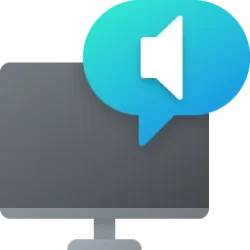Navigation
Install the app
How to install the app on iOS
Follow along with the video below to see how to install our site as a web app on your home screen.
Note: This feature may not be available in some browsers.
More options
Style variation
-
Disable Automatic Windows Updates in Windows 11
This tutorial will show you how to disable Windows Update from automatically downloading and installing updates in Windows 10 and Windows 11.- Brink
- Replies: 13
-
Use ViVeTool to Enable or Disable Hidden Features in Windows 11
This tutorial will show you how to use ViVeTool to enable or disable hidden features in Windows 10 and Windows 11.- Brink
- Replies: 49
-
Restore Classic File Explorer with Ribbon in Windows 11
This tutorial will show you how to restore the classic File Explorer with Ribbon for your account or all users in Windows 11.- Brink
- Replies: 407
-
Create Windows 11 Bootable USB Installation Media
This tutorial will show you how to create a bootable USB flash drive used to install Windows 11 with UEFI support.- Brink
- Replies: 128
-
Uninstall or Reinstall Copilot app
This tutorial will show you different ways to uninstall or reinstall the Copilot app for your account or all users in Windows 10 and Windows 11.- Brink
- Replies: 0
-
Add or Remove "Learn about this picture" Desktop icon
This tutorial will show you how to add or remove the "Learn about this picture" desktop icon when using Windows Spotlight as your desktop background for your account in Windows 11 and Windows 10.- Brink
- Replies: 27
-
Use SFC to Repair System Files in Windows 11
This tutorial will show you how to run the System File Checker (SFC) tool to repair missing, corrupted, and modified system files in Windows 10 and Windows 11.- Brink
- Replies: 25
-
Download Official Windows 11 ISO file from Microsoft
This tutorial will show you how to download an official Windows Server ISO or Windows 11 64-bit or ARM64 ISO file from Microsoft.- Brink
- Replies: 415
-
Repair Install Windows 11 with an In-place Upgrade
This tutorial will show you how to do a repair install of Windows 11 by performing an in-place upgrade without losing anything.- Brink
- Replies: 326
-
Clean Install Windows 11
This tutorial will show you step by step on how to clean install Windows 11 at boot on your PC with or without an Internet connection and setup with a local account or Microsoft account.- Brink
- Replies: 233
You are using an out of date browser. It may not display this or other websites correctly.
You should upgrade or use an alternative browser.
You should upgrade or use an alternative browser.
Tutorials
Windows 11 tutorials, tricks, tips, and guides.
This tutorial will show you how to add or remove Properties on the Recycle Bin context menu for all or specific users in Windows 10 and Windows 11.
The Recycle Bin provides a safety net when deleting files or folders. When you delete any of these items from a drive, Windows places it in the Recycle Bin and the Recycle Bin icon changes from empty to full.
The Recycle Bin properties page allows users to select a Custom maximum size or Don't move files to the Recycle Bin. Remove files immediately when deleted, and turn on or off to Display delete confirmation dialog.
If wanted, you can remove Properties from the Recycle Bin context menu to prevent opening the Recycle Bin properties page.
You must be signed in as an administrator to...
This tutorial will show you how to add or remove the drive space indicator bar for all users in Windows 10 and Windows 11.
The drive space indicator bar gives you a visual display of available free space for each drive shown on This PC in File Explorer.
The drive space indicator bar is blue until free space gets below 10%, then the bar turns red to help let you know the drive is low on free space.
If wanted, you can remove the drive space indicator bar to no longer show on drive tiles.
You must be signed in as an administrator to add or remove the drive space indicator bar for all drives.
The drive space indicator bar will only show while using either the Tiles or Content layout view in This PC.
EXAMPLE: Add and remove drive...
This tutorial will show you how to change the Task Manager app theme to light mode, dark mode, or use system setting for your account in Windows 11.
Task Manager can be used to view and manage your processes, performance statistics, app history, startup apps, users, processes details, and services in Windows 11.
Starting with Windows 11 build 22621.1344, Microsoft has added the ability to use your preferred theme in Task Manager regardless of the active theme in Windows. You can select to use a light, dark, or system setting app theme for Task Manager.
Here's How:
1 Open Task Manager (Ctrl+Shift+Esc).
2 Click/tap on Settings on the bottom left side of Task Manager. (see screenshot below)
3 Under App theme, select (dot) Light...
This tutorial will show you how to enable or disable context menus on the taskbar for all or specific users in Windows 11.
The taskbar is a horizontal bar at the bottom of your desktop in Windows 11 that shows the Start menu :win:, Search, Task View, Widgets, Chat, File Explorer, Microsoft Edge, and Microsoft Store icons aligned to the center by default. The taskbar corner includes the notification area icons, Quick Settings (Win+A), and Notification Center (Win+N) with the clock and calendar.
The taskbar context menus include:
Right click on taskbar for Taskbar settings.
Right click on the Start button or press Win+X to open the Win+X Quick Link Menu.
Right click on an icon on the taskbar to open its Jump List.
Shift + Right click...
This tutorial will show you how to add or remove the Open in new process context menu for all users in Windows 10 and Windows 11.
You can right click on a drive, folder, or library, click/tap on Show more options (Shift+F10), and click/tap on Open in new process to open the drive, folder, or library in its own new separate process.
Opening drives, folders, and libraries in their own new separate explorer process can improve the stability of the explorer shell.
By default, all File Explorer windows, including the desktop shell, run in a single explorer.exe process. If one File Explorer window hangs or crashes, it will cause all File Explorer windows running in the same process to hang or crash until the process restarts.
While you...
This tutorial will show you how to delete a sound theme for your account in Windows 11.
A sound theme is a set of sounds applied to events in Windows and programs.
After you change your system sounds, you can save it as a sound theme to have available to select as a sound scheme.
If you decide you no longer want the saved sound theme, you can delete it.
Here's How:
1 Open Settings (Win+I).
2 Click/tap on the Personalization on the left side, and click/tap on Themes on the right side. (see screenshot below)
Open Themes settings
3 Click/tap on Sounds at the top. (see screenshot below)
You can also open Run (Win+R), copy and paste rundll32 shell32.dll,Control_RunDLL mmsys.cpl,,2 into Run, and click/tap on OK to directly open...
This tutorial will show you how to enable or disable changing the theme for all or specific users in Windows 10 and Windows 11.
A theme is a combination of the desktop background, lock screen background, colors, sounds, and mouse pointers.
You must be signed in as and administrator to enable or disable changing the theme.
Option One: Enable or Disable Change Theme for All or Specific Users in Local Group Policy Editor
Option Two: Enable or Disable Change Theme for All Users using REG file
EXAMPLE: Change theme disabled
Enable or Disable Change Theme for All or Specific Users in Local Group Policy Editor
The Local Group Policy Editor is only available in the Windows 10/11 Pro, Enterprise, and Education editions.
All...
This tutorial will show you how to save your custom theme to a .theme or .deskthemepack file in Windows 11.
A theme is a combination of the desktop background, lock screen background, colors, sounds, and mouse pointers.
You can save your custom theme to a .theme or .deskthemepack file.
When you save your custom theme to a .theme file, it is saved to the %LocalAppData%\Microsoft\Windows\Themes folder for the current user. The saved theme will now be available to select when changing your theme.
A .deskthemepack file can be used as a backup and for sharing your custom theme. The person you shared the .deskthemepack file with can double click/tap on the .deskthemepack file to save and apply the theme to their account.
Option One...
This tutorial will show you how to allow or prevent themes to change desktop icons for your account in Windows 10 and Windows 11.
Windows includes the common This PC (aka: Computer), User's Files, Network, Recycle Bin, and Control Panel shortcuts that you can add or remove as icons on your desktop.
Changing your theme can also change your desktop icons to what's included in the theme.
Option One: Allow or Prevent Themes to Change Desktop Icons in Desktop Icon Settings
Option Two: Allow or Prevent Themes to Change Desktop Icons using REG file
EXAMPLE: desktop icons
Allow or Prevent Themes to Change Desktop Icons in Desktop Icon Settings
1 Open Settings (Win+I).
2 Click/tap on Personalization on the left side, and click/tap...
This tutorial will show you how to allow or prevent themes to change desktop icons for your account in Windows 10 and Windows 11.
The mouse pointer, which is sometimes referred to as the cursor, is a bitmap that specifies a focus point on the screen for user input with the mouse.
You can change the mouse pointer style, color, and size to make it easier to see in Windows 11.
Changing your theme can also change your mouse pointers to what's included in the theme.
Here's How:
1 Do step 2 (allow) or step 3 (prevent) below for what you would like to do.
Allow Themes to Change Mouse Pointers
This is the default setting
A) Click/tap on the Download button below to download the file below, and go to step 4 below...
This tutorial will show you how to add or remove Automatically hide taskbar to the desktop context menu for all users in Windows 11.
The taskbar on your desktop is located on the bottom of the screen by default in Windows 11.
If you like, you can have the taskbar automatically hide in Windows 11.
If you enable automatically hide the taskbar, you can show the taskbar on demand by:
Hover pointer on border of taskbar location.
Press the Win + T keys.
On a touchscreen, swipe inwards from the border (ex: bottom) of taskbar location.
If you are someone that turns on or off "Automatically hide taskbar" often, then you could add the Automatically hide taskbar context menu to make it fast and easy to turn on/off on demand.
You must be...
Latest Tutorials
-
Browsers and Mail Enable or Disable Preload Pages for Faster Browsing and Searching in Microsoft Edge
- Started by Brink
- Replies: 0
-
Browsers and Mail Enable or Disable Share Additional OS Regional Format with Sites in Microsoft Edge
- Started by Brink
- Replies: 0
-
Browsers and Mail Enable or Disable Text Prediction in Microsoft Edge
- Started by Brink
- Replies: 0
-
Browsers and Mail Enable or Disable Show Downloads Menu when Download Starts in Microsoft Edge
- Started by Brink
- Replies: 0
-
Site Usage Opt In or Out of New Insider Build Push Notifications from ElevenForum.com
- Started by Brink
- Replies: 0
-
Browsers and Mail Enable or Disable Export Passwords in Microsoft Edge on Windows 11
- Started by Brink
- Replies: 0
-
-
-
Accounts Enable or Disable Enhanced Anti-Spoofing for Windows Hello Facial Recognition in Windows 11
- Started by Brink
- Replies: 4
-
Tutorial Tags
android
background
battery
bitlocker
bluetooth
boot
color
context menu
copilot
defender
desktop
display
drive
edge
file explorer
folder
fonts
hyper-v
icon
keyboard
libraries
location
mouse
notifications
onedrive
outlook
pen
pointer
power
printer
recall
screenshot
search
settings
share
shortcuts
sign-in
sound
start menu
store
taskbar
terminal
theme
touch
usb
voice
wi-fi
widgets
wsa
xbox




















